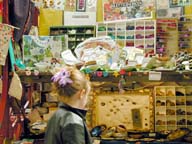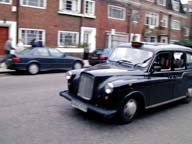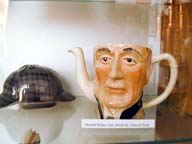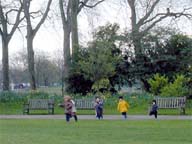Main content starts here.
![]()
![]()
Contrary
to my belief that everyone drinks
tea brewed in a pot, over 90 % of
tea consumed in England are from
tea bags.
The rise of tea bags,
which didn't even exist before World
War II had a lot to do with the
arrival of instant coffee.
As I reported last time, tea had become an institution in English life, but that changed with World War II. Tea leaf auction in London that had been taking place since 1647 was suspended and over 30,000 tons of tea leaves were moved to outside the city to escape the bombing. Tea leaves were only available through ration, a hardship that was one of the toughest part of wartime life for the English.
 |  |
| Button shop on the street | The
cute, round figured London taxi
cab - roomy inside too |
The auctions resumed in 1952, but there was yet another major event that year: the creation of coffee bars. The modern feel of coffee appealed to the masses and the tea-dominated English life started to change. And to further spark change, instant coffee commercials on television, which had only just started broadcasting.
Instant coffee was easy and convenient, and this point was emphasized by repeated showings of commercials. Tea merchants realized that tea as it was then did not stand a chance against the ease of instant coffee. To compete, they came up with an idea: tea bag.
 |  |
| Sherlock Holmes tea pot from the Brahma Museum | One of the nearly 100 tea gardens that existed in the 18th Century, Ranelagh garden. While the tea garden is gone, it has survived as a park. |
Reporter:Keiko Taniguchi
